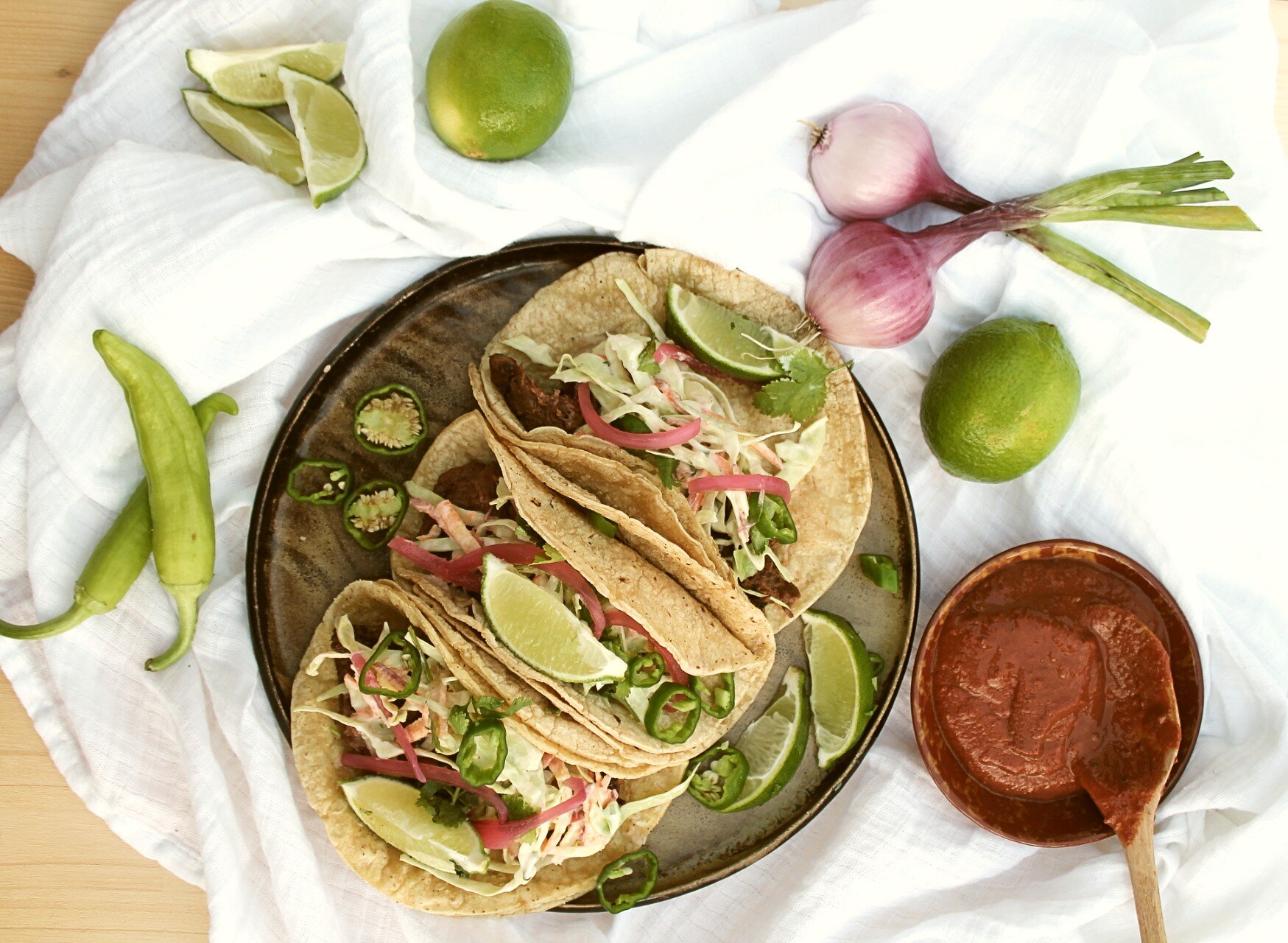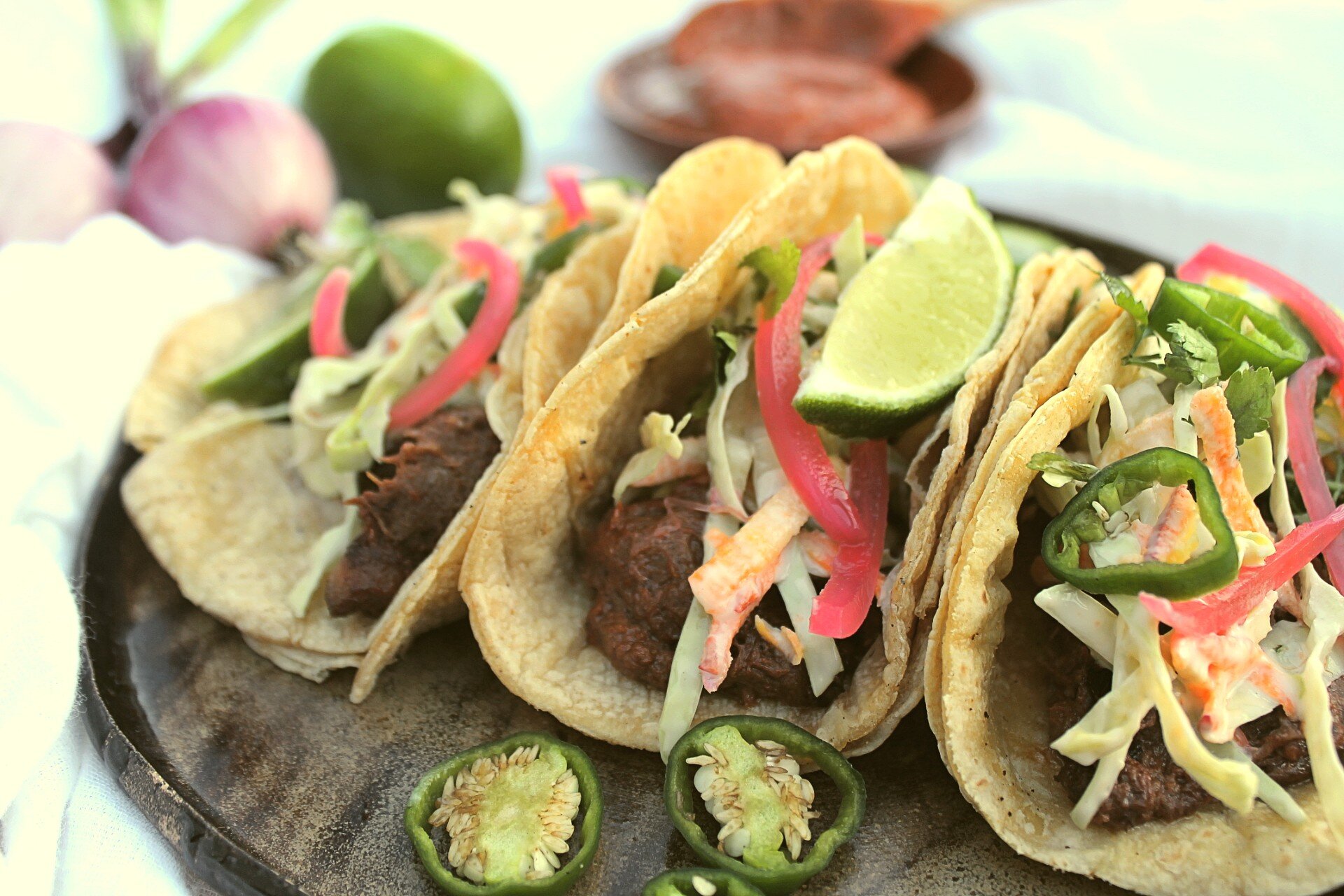Autumn Olive BBQ Sauce
I want to let you in on a little secret. There’s a plant that grows in our region, and it’s not quite so popular. Many people go to great lengths to cut it down, spray it, and curse its very existence. However, my family loves this plant, and I’d like to convince you of it’s greatness too. The plant I’m talking about is Autumn Olive, or Eleagnus Umbelatta. It was originally brought to our country from Asia to promote soil health and erosion control, but has since been deemed an invasive from hell and most people would agree it takes a constant battle to eradicate.
When the season to harvest these berries nears, a good indicator is the color of the leaves. They will start to fall off as well which makes collecting them easier.
Although I am not completely blind to the invasive nature of this plant, and I am aware that it’s numbers have increased, I can’t help but want to encourage a solution through the phrase my partner Clay often says “eat the invaders”.
What many people who are enemies of this plant don’t seem to know, is that between the silvery sage green colored leaves of this plant, you can find red berries on most plants every fall. These berries are completely edible and one of my family’s favorites. They have a pretty sour taste early in the season, but once they turn a deep red, and typically after the first couple of frosts, these berries turn into sweet, creamy fruits that can be used in all sorts of applications, although eating them right off the bush seems to be something I personally can’t resist when harvesting, or passing them on an autumn walk around the area. What I’ve seemed to notice, like with most wild plants, is that some of them produce ripe fruit before others. Already this year we have harvested enough to make some Autumn Olive jelly for a food tasting at one of our plant classes. I baked some of my chocolate chaga bread, and served it with the Autumn Olive jelly and some whipped maple butter. Let’s just say we didn’t leave with many leftovers!
The reason I want to spread this information is so we can all start to take a better approach to reducing invasive species in our area. So often, plants that are deemed unwelcome by some are simply cut down or sprayed with toxic chemicals that leach into our waterways. I don’t know about you, but using poison on our landscape isn’t something I feel is safe for us, or for our future generations or wildlife. One simple way to combat these plants that are considered unworthy is to eat the very thing that allows them to continue spreading-their seeds! And those seeds are encased in a wonderfully delicious fruit packed full of nutrients. In fact, in the red pigmented berries, lycopene accounts for 72%-82% of the total carotenoids found in Autumn Olives. In other words, the same thing found in tomatoes that makes them so healthy in fighting cancers, is also found in these berries, in very potent amounts - up to 54mg/100g vs. 3mg/100g in tomatoes.
Autumn Olives don’t necessarily produce fruit every year. This plant had no berries and was still holding onto it’s color unlike the plant in the image above.
Once these plants are identified, the harvesting process is fairly simple. If they are harvested when they just become ripe, the “fondle” method can be used. All it takes is a berry basket that can be hung around the neck, and simply “fondle” the berries in small clusters until they fall off into the basket. This will yield a very clean harvest that is great for eating fresh. However, if you’re into jams or purees, and can harness some patience, wait until the first few frosts. You will notice these berries tend to hold on for a while before they drop. Take a tarp and place it as neatly as you can under a portion of the plant. Grab onto the branches and give them a good shake. If you’ve gotten there at the right time of year, the berries should just fall off onto the tarp. This method will inevitably result in more branches and leaves littering your collection, and may not be easy for grabbing them by the handful for eating fresh. Once you get them home sort out any large branches and leaves and any other debris, and you’ll have an abundance of berries to then process down into the food of your choice! Like I mentioned above, it can be made easily into Autumn Olive jelly. The great part is the fact that these berries have so much pulp to them, that the resulting jelly has much more body to it than traditional jelly made with the juice of the fruit.
This is typically the application that we use most often in our household, however this year, I decided to get more creative. Since the fruits can be compared nutritionally to tomatoes, I thought why not use them as a substitute for tomatoes in some recipes? So many times, sugar is added to tomato recipes and products, that I thought why not use something that already has a natural sweetness and try out Autumn Olives?
I had heard of using them in ketchup recipes, but I wanted to take it a step further. Just this week, we purchased some local grass fed beef tongue and threw it in the crock pot to become tender. I knew as soon as it started to simmer, I had to find a way to use Autumn Olives to jazz it up. As usual, it’s a goal to incorporate as many wild foods as I can into my family’s dinners. Typically that means we are eating dinner with a side of wild rice that is hand harvested by Clay, using wild mushrooms in a stir fry or throwing wild greens or vegetables into a salad or soup for us, but this week I wanted to get even more creative and try something new.
Since Autumn Olives are so abundant, I didn’t have to travel far. At this time of year they don’t quite “shake off the bush”, so I took to hand harvesting some berries at our usual picking spots. Since I didn’t have an exact recipe, I harvested about a half gallon of berries, which isn’t time consuming when you find a ripe plant weighed down by it’s juicy fruit, knowing that I'd most likely have some extra berries to throw onto yogurt or set out on the table to disappear in the presence of two little ones at home.
Once I got them back home I started out on creating a recipe for homemade BBQ sauce to use on the pulled tongue we had stewing. I threw about 4 cups of berries on the stove in a large pot, and added just a splash of water to the bottom. Once the berries started to simmer, I used the masher Clay hand carved for me just to break them up a bit. After only about 5 minutes, I ran them through our manual food mill to extract the juice, and discarded the seeds, and this became the base for my BBQ recipe. Note: If you don’t have access to a food mill, you could run them through a blender and push through a sieve, strainer, or cheese cloth to extract the juice. If you’re like me, then you’re into making large batches at a time. I figure if I'm already going to be in the kitchen I might as well make it last for several meals, so large batches are key!
Once I juiced the berries, I ended up with about 4 cups of juice. Then the real magic happened.
The Dijon I used in this recipe was perfect for the application. It’s got a bite, and the texture of whole mustard seeds is mouthwatering. I added 1 tablespoon to the recipe, along with some molasses, brown sugar, and various spices, let it simmer on the stove until it thickened, and when it was all done, I slathered that nectar onto some tender pulled tongue to be layered onto tacos later that night. Below is the recipe for the BBQ sauce. I hope it inspires you to get creative in the kitchen and make an effort to get outside and spend time foraging the abundance of wild foods around us!
Autumn Olive BBQ Sauce
32 oz. Autumn Olive Juice
4 Tbsp. Tomato Paste
4 Tbsp. Apple Cider Vinegar
4 Tbsp. Brown Sugar
4 Tbsp. Molasses
1 Tbsp. Dijon (Preferably Grand Traverse Culinary Oils brand, if you live in my neck of the woods)
2 tsp. Worcestershire Sauce
2 tsp. Smoked Paprika
1 tsp. Garlic Powder
Salt & Pepper to taste
To puree fresh Autumn Olives, place them on the stove with a splash of water to stop them from sticking. Once they start to simmer, mash them to break them up just a bit. Simmer for 5 minutes, or until they have started to become tender. Run them through a food mill or blend and strain out the juice. Discard the seeds. You will need about twice as many berries to get 32 oz. of juice, give or take depending on your location and how hydrated the berries are.
Once you have the Autumn Olive Juice, place in a large pot and add the remaining ingredients. Bring to a simmer and stir occasionally until all ingredients are well incorporated and the mixture starts to become reduced by half. The color will turn dark and it will start to caramelize. Once it is to the consistency of your liking, use immediately or cool and place in jars. It will keep for 10 days in the refrigerator.





